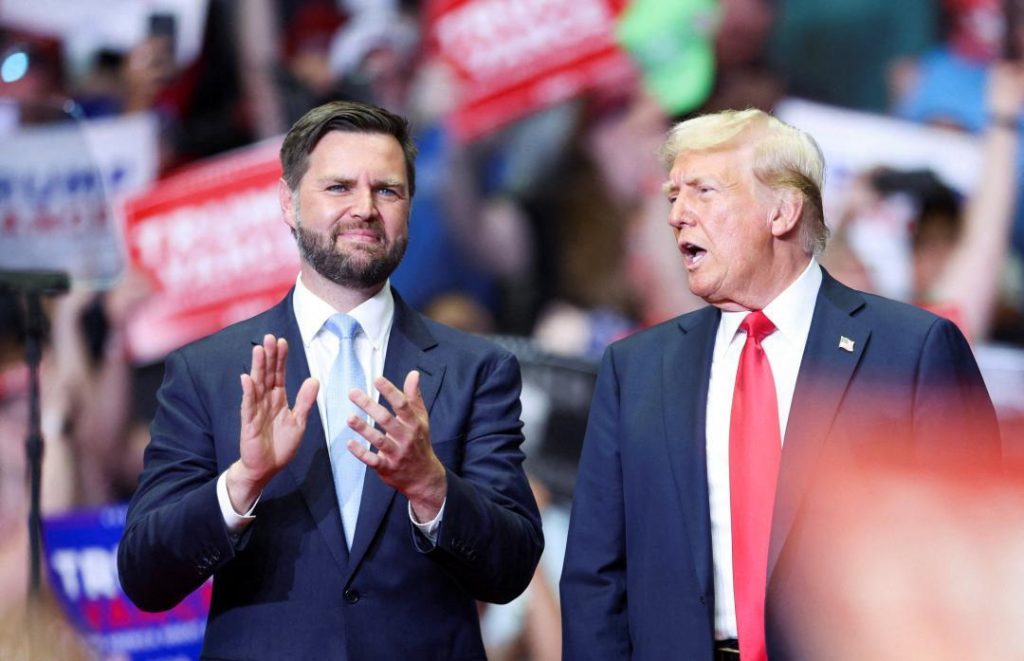
US VP Vance Explains How Trump’s Tariffs on India Can Force Russia to End Ukraine War
In a recent statement, US Vice President JD Vance appeared to defend the additional 25% tariffs imposed on India by President Trump. The tariffs, which were implemented in June 2021, have been a subject of controversy, with many questioning their effectiveness and impact on the Indian economy. However, according to Vance, the tariffs were a deliberate move by Trump to apply “aggressive economic leverage” on India, with the ultimate goal of forcing Russia to end its war in Ukraine.
In an interview, Vance explained that Trump believes that Russia can be “reinvited” to the world economy if it stops killing in Ukraine. He claimed that the tariffs on India were a key part of this strategy, as they would make it harder for Russians to get rich from their oil economy. By targeting India, the US was effectively cutting off a major source of revenue for Russia, which would, in turn, pressure Russia to end its aggression in Ukraine.
The idea behind this strategy is that Russia’s economy is heavily reliant on oil exports, and a significant portion of these exports go to India. By imposing tariffs on Indian goods, the US is, in effect, making it more expensive for Russia to export its oil, thereby reducing its revenue. This, Vance believes, would create economic pressure on Russia to reconsider its military actions in Ukraine.
But how exactly would this work? India is one of the world’s largest importers of oil, and Russia is one of its main suppliers. In 2020, India imported over 80% of its oil from Russia, making it a critical market for the country’s oil exports. The tariffs imposed by the US would increase the cost of Indian goods, making them less competitive in the global market. This, in turn, would reduce India’s demand for Russian oil, thereby reducing Russia’s revenue.
However, it’s worth noting that India has been diversifying its energy sources in recent years, and has been increasing its imports from other countries, including the US. This has reduced its reliance on Russian oil, making it less vulnerable to US tariffs. Additionally, India has been exploring alternative energy sources, such as renewable energy and natural gas, which would reduce its dependence on oil imports.
Furthermore, some experts argue that the tariffs imposed by the US are not the most effective way to achieve its goals. They point out that Russia has a long history of adapting to sanctions and finding ways to circumvent them. Additionally, the tariffs would disproportionately affect Indian businesses and consumers, who would bear the brunt of the increased costs.
Despite these criticisms, Vance’s statement highlights the ongoing tensions between the US and Russia. The conflict in Ukraine has been ongoing since 2014, and the US has been providing military and economic support to Ukraine in an effort to counter Russian aggression. The tariffs imposed on India are just one part of a broader strategy to apply pressure on Russia to end its military actions in Ukraine.
The US has been using various tools to apply economic pressure on Russia, including sanctions and export restrictions. The tariffs imposed on India are a new addition to this strategy, and are aimed at targeting Russia’s oil exports, which are a critical source of revenue for the country.
In conclusion, while Vance’s statement has been met with skepticism by some experts, it highlights the complex and multifaceted nature of the conflict in Ukraine. The tariffs imposed on India are just one part of a broader strategy to apply pressure on Russia to end its military actions in Ukraine. Whether or not this strategy is effective remains to be seen, but it is clear that the US is committed to using all available tools to defend its interests and support its allies in the region.
Source:



